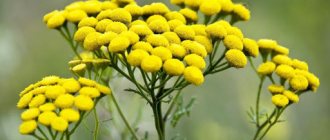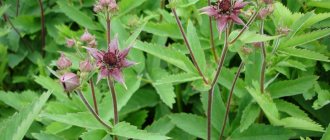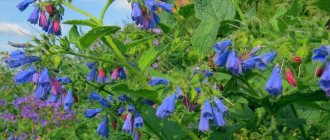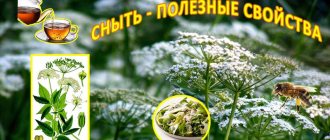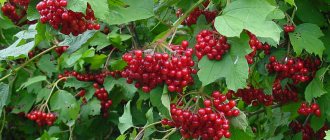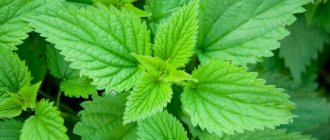Botanical description
Greater celandine is a perennial herbaceous plant with a tap root, light brown in color.
The stem is 30-90 cm high, erect, with sparse long hairs, branched in the upper part. The leaves are alternate, large, green above, bluish below, soft, deeply pinnately dissected into segments. The stem, branches and leaves are very brittle; when broken, they release a thick golden-orange juice with an unpleasant odor.
The flowers are bright yellow, on long stalks, collected at the ends of the stem in umbrella-shaped inflorescences. Petals are 8-9 mm long. The fruit is an elongated, pod-shaped, erect, bivalve capsule, up to 5 cm long and 2-3 mm wide. Each fruit contains about 30 seeds. The seeds are black or dark olive in color
Great celandine grows in almost all European countries. In Russia it is found in the European part - Crimea, Western and Eastern Siberia, the Caucasus. Partially found in the Far East
For successful growth and reproduction, it prefers small sparse forests, with loose and rich soil, and therefore is firmly established in village gardens and vegetable gardens. Greater celandine can often be found in urban wastelands, as well as along destroyed building facades
The flowering period begins in May and continues until mid-summer. Fruit ripening period from July to September
Celandine reproduces both by seeds and vegetatively. It can produce about 1000 seeds at a time. Seeds are carried by the wind, as well as along with the soil that sticks to shoes, agricultural tools, animal hooves, etc.
[edit] Classification
Type Greater Celandine
(
Chelidonium majus
) is included in the genus Celandine (
Chelidonium
) of the Poppy family (
Papaveraceae
) of the order
Ranunculales
.
| 58 more orders | 40 more births | |||||||||||||||
| department Flowering plants | Poppy family | species Greater celandine | ||||||||||||||
| Kingdom of Plants | order Ranunculaceae | genus Celandine | ||||||||||||||
| 11 more departments | 6 more families | species Chelidonium asiaticum | ||||||||||||||
Interesting Facts
- An ancient legend says that the plant received one of its names “swallow grass” due to the fact that it bloomed during the period when swallows arrived and ended its flowering when the birds flew to warm countries
- Another legend says that in ancient Rome, various eye diseases were treated with celandine juice. Nowadays it is no longer used for this purpose, since it is known that the juice of the plant can cause burns, but for some reason ancient doctors believed that swallows used the juice of this plant to treat their blind chicks
Contraindications
Celandine and preparations containing herbal extract should not be taken during pregnancy as they stimulate uterine contractions. The plant is prohibited for stomach ulcers, acute catarrh of the gastrointestinal tract, asthma, epilepsy, and patients with angina pectoris. It is important to know that celandine contains compounds that cause drowsiness.
Overdoses of celandine provoke dyspepsia, nausea, constipation, lethargy, dryness and burning in the mouth, headaches, dizziness, disturbances of consciousness, convulsions, and sometimes even paralysis. Although this herb is used to treat the liver, an overdose can, on the contrary, damage the organ. You should not use celandine for longer than 2 months.
Photo gallery
[edit] Literature
- Gubanov, I. A. et al.
621.
Chelidonium majus
L. - Greater celandine // Illustrated guide to plants of Central Russia. In 3 volumes - M.: Scientific T. ed. KMK, Institute of Technology. research, 2003. - T. 2. Angiosperms (dicotyledonous: separate-petalled). - P. 247. - ISBN 9-87317-128-9. - Putyrsky I. N., Prokhorov V. N.
Universal encyclopedia of medicinal plants. - M.: Makhaon, 2000. - P. 291-293. — 656 p. — ISBN 985-428-305-4. - Maznev N.I.
Encyclopedia of medicinal plants. - 3. - M.: Martin, 2004. - P. 432-433. — 496 p. — ISBN 5-8475-0213-3.
Great celandine: beneficial properties
Among medicinal plants, greater celandine is perhaps the most popular. Since ancient times, people have been well aware of its medicinal properties and have always used it to cleanse the body of acne, blackheads, calluses, warts and even freckles. The plant contains resins and quite a lot of alkaloids. Almost all of them are toxic, but oddly enough, it is thanks to them that celandine has its medicinal properties
Many of these alkaloids are used in medicine as analeptics and antispasmodics.
The composition of celandine also includes:
- saponins
- coumarins
- flavonoids
- essential oil
- ascorbic acid
- beta carotene (vitamin A)
- organic acids: malic, chelidonic, citric, succinic
When is medical attention required?
If you are poisoned by celandine, you must consult a doctor in any case, even if the symptoms of poisoning seem minor - only a specialist can adequately assess the threat to health.
Treatment in a hospital consists of the following measures:
- evacuation of the stomach contents to remove possible residual poison by rinsing through a tube;
- maintaining cardiovascular activity and breathing, if necessary, connecting to a ventilator;
- monitoring the functions of the nervous system, mental state and blood glucose levels, if necessary, symptomatic therapy aimed at correcting abnormalities.
Indications for use
The medicinal collection of celandine is widely used in official medicine for the manufacture of medicines. Pharmacists from different countries have developed such drugs as the restorative gel “Clandestine”, which helps get rid of warts, as well as the drugs “Enterosanal” and “Plantasan B” (an ointment for the treatment of warts). Celandine preparations are used as an antispasmodic and also as an antimicrobial agent
In folk medicine, celandine is used for diseases of the liver and gall bladder. Infusions and decoctions are used to treat jaundice, dissolve stones, and cleanse the liver. It is also used for digestive disorders as a pain reliever. To get rid of warts, the milky juice of the plant is widely used.
The plant is often used to treat various skin diseases, including eczema, gout and others.
Symptoms of poisoning
Celandine poisoning can be acute or chronic. Chronic poisoning occurs with prolonged use of a relatively small amount of celandine orally. Symptoms are usually less pronounced than with acute poisoning, but this makes it no less dangerous. The body's reaction to poisoning also depends on age; in children, intoxication is more severe.
Signs of celandine poisoning:
- nausea, vomiting;
- diarrhea, accompanied by severe intestinal cramps and flatulence;
- mydriasis (dilated pupils);
- heart rhythm disorders (tachycardia, arrhythmia);
- increased sweating (cold sweat);
- difficulty breathing, shortness of breath, cough;
- pale skin;
- fasciculation (muscle twitching);
- convulsions;
- loss of consciousness, coma.
Death occurs due to developed heart failure.
Signs of toxic effects of celandine when applied topically:
- dermatitis at the site of application of celandine (contact dermatitis);
- redness, rashes and blisters.
Source: depositphotos.com
Greater celandine: collection and preparation
In the old days, experienced healers paid great attention to the preparation of celandine. They went for grass in dry and clear weather, usually at noon. A healthy plant was selected and carefully monitored to ensure that its leaves were not damaged by various pests and insects.
Then the celandine was dug up. They didn’t cut it, but dug it up, along with the roots. The roots were cleared of dirt and small bunches of grass were formed, 7-10 plants each. Bunches were hung upside down
For drying, use attics, sheds, or other rooms protected from direct sunlight and with good ventilation.
The plants were dried for several weeks until the stem began to break in an attempt to bend it. Then the celandine was completely wrapped in paper, leaving the inflorescences unwrapped, and stored either in wooden boxes or left hanging.
With this method of harvesting, the plant retained its beneficial substances for three years. In addition, juice was prepared from celandine, which was used to successfully remove papillomas and warts
To prepare the juice, you need to collect fresh plants, rinse and lightly dry. Then pass through a blender or meat grinder. Using gauze or thick cloth, squeeze the juice out of the resulting pulp and pour it into a dark glass container, which must be sealed with stoppers.
After 5-7 days, the fermentation process of the juice will begin, so it is necessary to open the container daily and release the gas from it. This must be done until fermentation ends. After this, the juice can be used for treatment
Important: store the finished product in the refrigerator!!!
How to prepare correctly
The above-ground part of the plant and its root are used for medicinal purposes. Greens are harvested in May-June; besides, it is better to collect only young shoots. It is advisable to dry the leaves and stems at a temperature of 30-60° C separately from other plants. The roots are dug up in autumn or early spring and dried at a temperature not exceeding 60° C. Store dried raw materials in hermetically sealed packaging, protecting them from moisture. From 6 kg of fresh leaves and roots you will get approximately 1 kg of dry raw materials.
Traditional treatment recipes
For eczema (infusion): mix 5 tablespoons of dry celandine herb, 1 tbsp. a spoonful of tansy flowers, 2 tbsp. spoons of tricolor violet flowers, 2 tbsp. spoons of dandelion root, 2 tbsp. spoons of corn silk and 1 tbsp. a spoonful of chicory root. Pour 1 liter of mixture. boiling water Leave in a thermos for 1 hour. Take 1/2 cup 3 times a day, no more than 2 weeks
For worms (infusion): 1 tbsp. pour 400 ml of dry collection into a spoon. warm boiled water and leave to infuse for 4 hours, then drink 1/4 cup three times a day until the worms are completely free
For seborrhea (infusion): mix 2 tbsp. spoons of celandine grass, 4 tbsp. spoons of a series of tripartite and 1 tbsp. a spoonful of horsetail. Pour 1 cup of boiling water over the herbal mixture and leave in a thermos for 1 hour, then strain. Rub the infusion into the scalp after washing. The procedure is repeated every other day
For warts (juice): if you have a lot of warts on your body, you can burn them daily with fresh celandine juice, which gives a fairly noticeable effect, especially in cases of recently appeared skin growths
For dermatitis (infusion): mix 1 tablespoon of dry celandine herb, hop cones, crushed valerian officinalis root, motherwort and calendula officinalis. Pour the mixture with 2 cups of boiling water and leave in a thermos for 2 hours. Strain. Take 3 times a day, 1 tablespoon, 20 minutes before meals. The course of treatment is 14 days, then take a break for two weeks and repeat the course.
For acne and acne (infusion): pour 2 tablespoons of dry celandine into two glasses of water and boil for 15 minutes. Leave the resulting substance to infuse overnight, then strain. Wet a cotton pad with the liquid and wipe your face, allowing the liquid to be completely absorbed.
For wounds and bruises (infusion): pour boiling water over 1 tablespoon of dry celandine herb and let it brew for an hour. dip a napkin in the infusion and apply to the sore spot for 15 minutes
For skin diseases (ointment): celandine powder - 10 g, lanolin - 10 g, petroleum jelly - 10 g, carbolic acid 0.25% - 10 drops. Mix the ingredients. Apply to affected areas of skin 2-3 times a day
This composition is implemented in the drug “Plantazan B”, which can be purchased at any pharmacy
For polyps in the rectum (juice): add 21 drops of celandine juice to 1 glass of water (200 ml), then stir thoroughly. You need to do enemas with the solution 1-2 times a day until a positive result appears.
To normalize liver function (water infusion): take 1 tablespoon of dry leaves or flowers of the plant. Pour 1 cup (200 ml) boiling water. Leave in a thermos for 30-40 minutes. Strain the mood. Use 3 times a day, 1/3 cup, 15-20 minutes before meals. Treatment course 7 days
If the therapeutic effect is weak, you can take a break for 3-5 days and then continue treatment
Use in cosmetology
Our grandmothers, it seems, knew how to make a beauty product from every herb. Celandine was also included in the list of herbs beneficial for hair and face. Women regularly rinsed their hair with a decoction of this plant to give it a beautiful shine, stimulate growth, and also to get rid of dandruff. It is also useful to wipe the facial skin with the same decoction, especially problematic skin (with acne, pustules, inflamed areas).
Mask for problem skin
Mix a teaspoon of peach or olive oil, one yolk, a little oatmeal and 10 drops of celandine juice. Keep on face for 5 minutes. Use no more than once a week. This product is useful for lightening age spots and treating acne.
Mask for oily skin
Prepare a mixture of 2 teaspoons of sour cream, 1 teaspoon of green clay and the same amount of celandine juice. Apply to cleansed facial skin and leave for 15 minutes. This mask is useful for regulating the sebaceous glands, preventing and treating acne.
